Perge, a Pamphylian city, is thought to have been established during the 12th and 13th centuries BC. In 334 BC, the city surrendered to Alexander the Great after being ruled by Lydia and Persia. The city’s heyday was between the 2nd and 3rd century AD, when the Romans ruled. This region contains the entirety of the city’s ruins. The necropolis, theatre, city walls, stadium, gymnasium, Roman baths, rectangular planned agora, lofty towers, huge fountains, column lined alleys, and Greek and Roman gates are social and cultural structures that highlight the grandeur of ancient city of Perge.
Historical Background
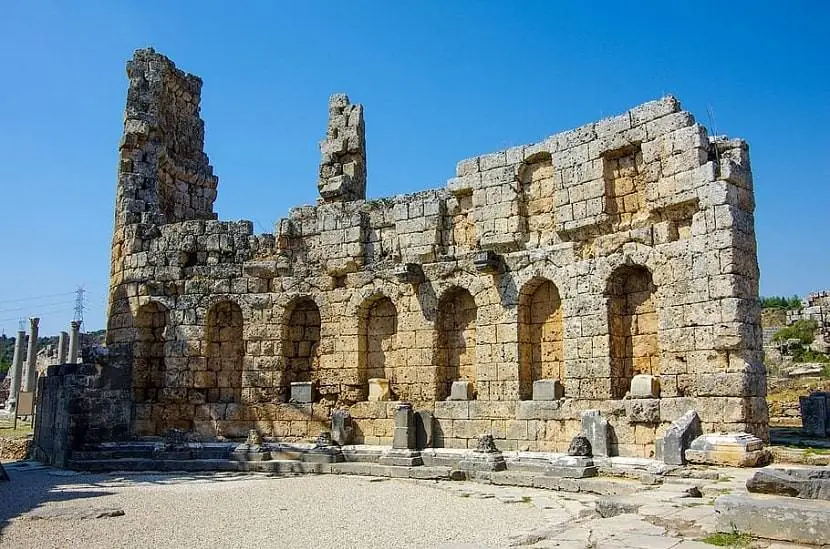
Ancient city of Perge is thought to be one of the earliest cities during the Roman era, as well as having existed during the Hittite period. In the 2nd and 3rd centuries AD, the city was at its peak. The majority of the structures in this area date from this era. The city was also known for its architecture, marble sculpting, and statues, and was one of the most prominent sculpture manufacturing hubs in ancient times. The Antalya Museum is now displaying many of the finds.
Things to See in the Ancient City of Perge
The historic Perge area is huge, and a visit there will take at least three hours. The city’s best-preserved structures, the theatre and the stadium, are located on the Perge access road and can be seen without purchasing a ticket.
Perge Stadium
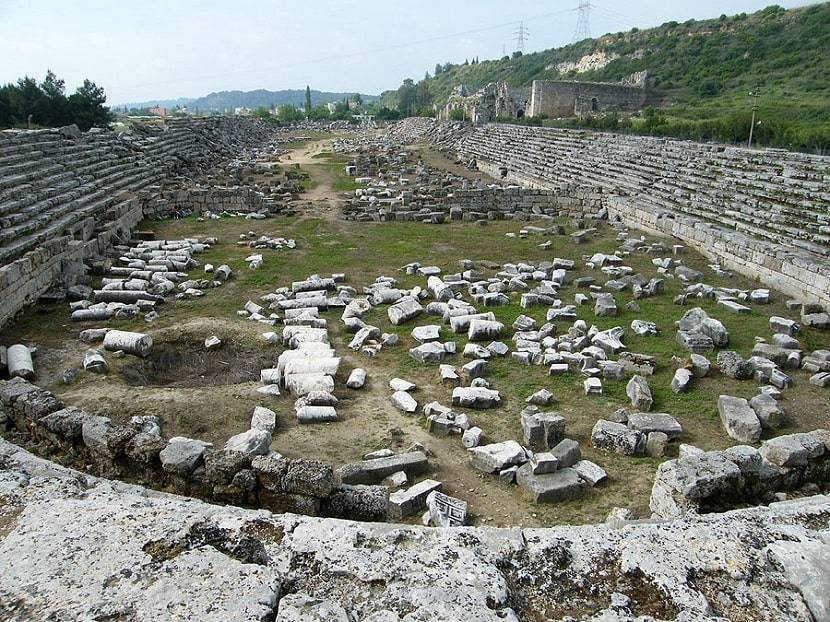
Ancient city of Perge is home to Turkey’s second best-preserved ancient stadium; only Aphrodisias’ stadium is better maintained. Perge’s stadium, which could hold 12,000 people, was built in the second century AD. It is 234 metres long and 34 metres broad, making it one of the largest structures of its sort. The auditorium had 12 rows of seats that were supported by a barrel-vaulted structure. There were 30 vaults on the stadium’s longer side and 9 on the northern end. Every third vault was open and led straight to the arena. Inscriptions found within several of the vaults suggest that they once acted as businesses.
♦ 8 Days Turkey Tour – Popular Cities
Perge Theatre
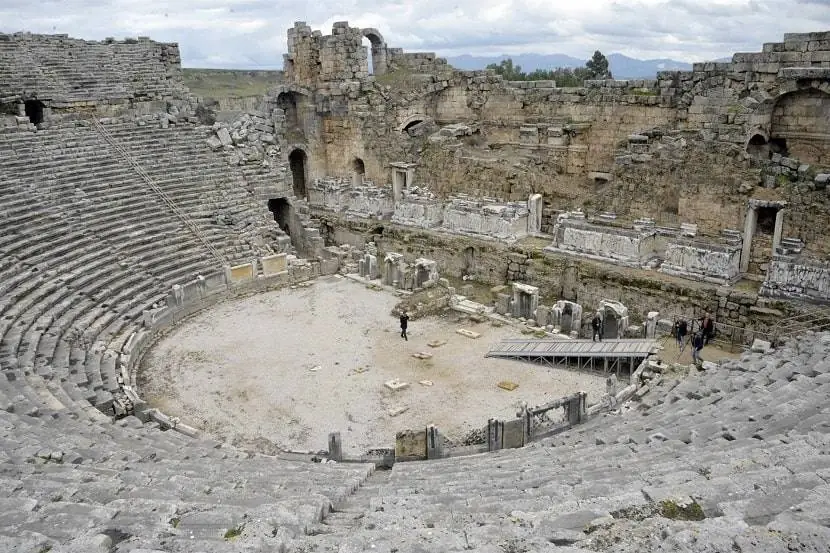
On the western side of the route to Perge, the historic theatre is a magnificent structure. This structure, which blends Greek and Roman elements, was most likely constructed around the year 120 AD. The theatre is shaped like a semicircle and sits on the side of a hill. A vaulted substructure supports a diazoma constructed in the Roman style. Roman theatres are distinguished by a colonnaded gallery around the top of the auditorium and a stage construction that still stands to a significant height. The Perge Theater has a seating capacity of 15,000 people.
Roman Gates
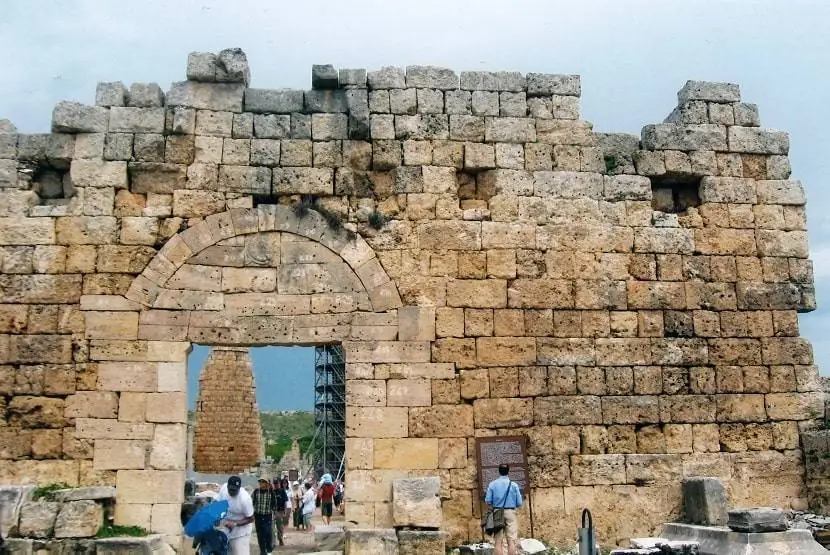
Ancient City of Perge could only be reached by passing through the city’s ramparts’ gates. Tourists visiting Perge today must pass via these massive gates. To begin, you must pass through two Roman-era gates. A courtyard was erected between them in the 4th century AD. Emperor Septimius Severus had the outer gate erected during his reign. High towers were erected on both sides of the gate. The inner gate, which dates from the period of Septimius Severus, goes from the courtyard into the city itself, passing through the southern city wall. The front arcades, which date back to Emperor Hadrian’s reign, are from older times.
Hellenistic Gate
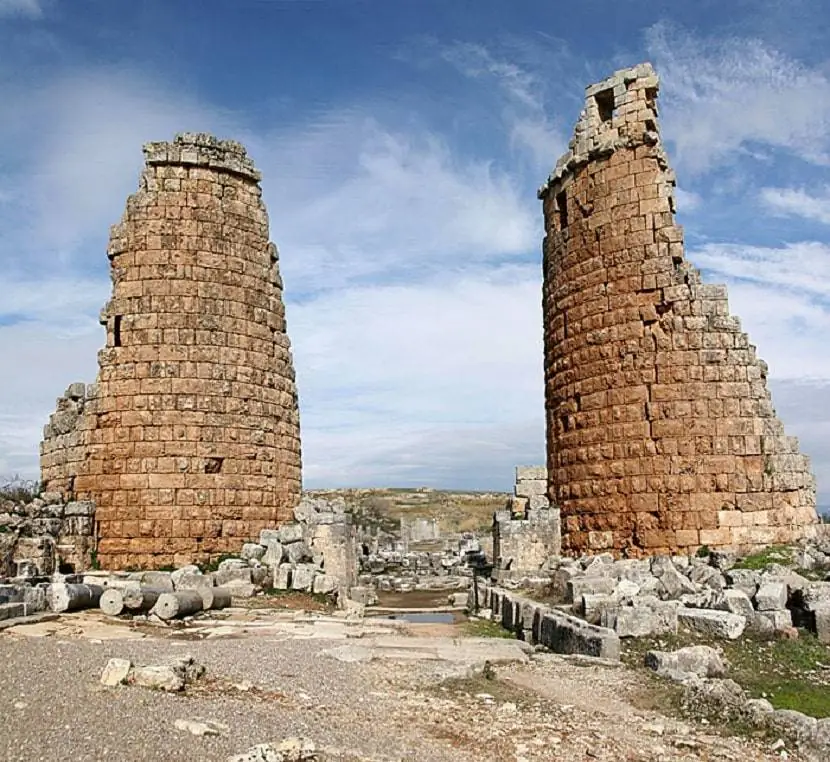
The Hellenistic gate on Perge’s ramparts is perhaps the city’s most recognisable symbol. It is made up of two circular towers made of hewn stones that stand on both sides of the city gate. The building was originally built during the Hellenistic period, however it was later rebuilt. Planica Magna funded the rebuilding of its inner, horseshoe-shaped courtyard between 120 and 122 AD. Marble blocks were used to cover the walls, and a two-story colonnade in the Corinthian order was constructed.
♦ 11 Day Turkey Tour With 4 Days Blue Cruise
A two-story superstructure with three gates was constructed on the courtyard’s northern side. It has a resemblance to Antalya’s famed Hadrian’s Gate. Starting with Nerva’s reign and ending with Hadrian’s, the building’s niches were adorned with statues of Roman emperors, their spouses, and civil workers. The majority of these monuments were discovered during the first phase of archaeological investigation in Perge and now grace the Antalya Archaeological Museum.

